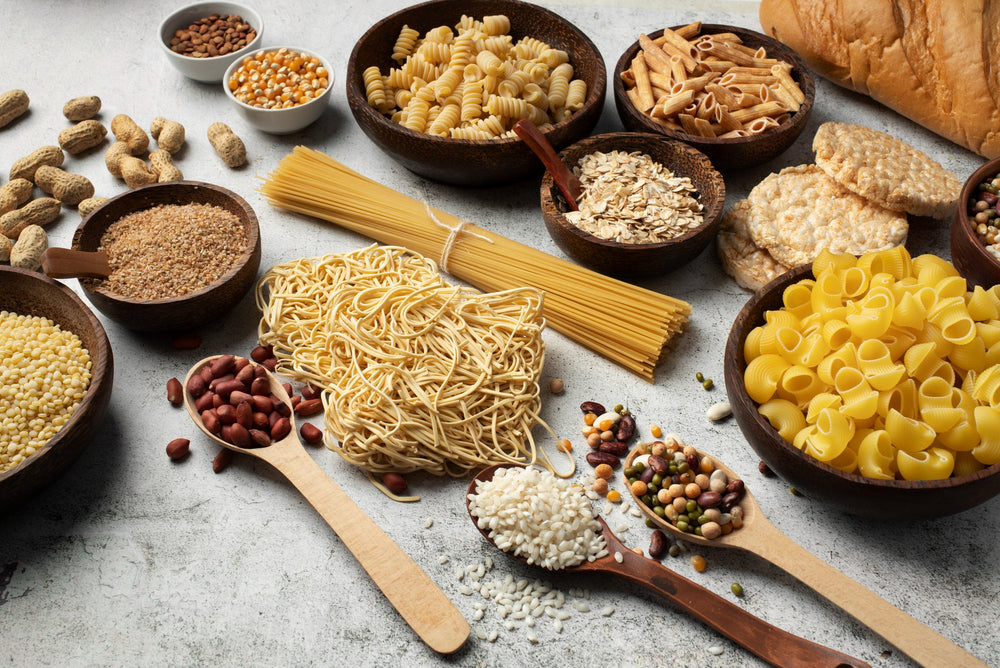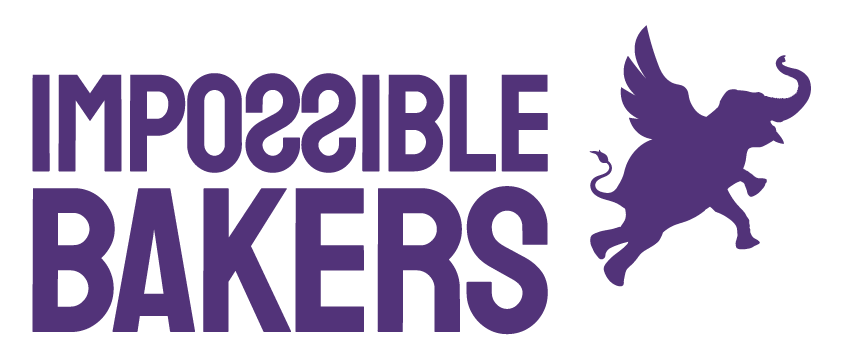CARBOHYDRATES, TWO SIDES OF THE SAME MOLECULE
Carbohydrates are part of the so-called macronutrients , a heterogeneous group that they make up along with fats and proteins. These three types of macronutrients are processed by our digestive system to reduce them to smaller particles that we can absorb and transport to our cells.
Carbohydrates, fats and proteins differ in their chemical composition and the functions they perform. However, all of them can be sources of energy for the body, although “gastronomic culture” has always considered carbohydrates as the default energy substrate.
Of these three groups, the most abundant in the body (and traditionally the most consumed) are carbohydrates , which is why we want to talk about them in this post.
What are carbohydrates?
Also called carbohydrates, carbohydrates, sugars or saccharides, carbohydrates are food biomolecules formed mainly by carbon, hydrogen and oxygen atoms , although some of them also contain other elements, such as sulfur and nitrogen.
The carbohydrate chains are linked by covalent bonds , very resistant chemical bonds that, when broken, release a large amount of energy that is used through the oxidation process. In fact, as we will see below, the main function of carbohydrates is to supply energy to the body.
Types of carbohydrates
Depending on their chemical structure, we can talk about four types of carbohydrates: monosaccharides, disaccharides, polysaccharides and oligosaccharides .
Monosaccharides
Monosaccharides are the simplest carbohydrates , since they are made up of a single molecule. They are characterized by their sweet flavor , and are used as a source of energy or, some of them, for cell development (anabolism) . This group of simple carbohydrates includes glucose, fructose and galactose.
Disaccharides
Disaccharides are made up of two monosaccharide molecules , which can be the same or different. For example, sucrose (common sugar) is a disaccharide formed by a glucose molecule and another fructose molecule.
Polysaccharides
Polysaccharides are carbohydrates made up of chains of more than ten monosaccharides . The most common are starch, glycogen and cellulose.
Oligosaccharides
Finally, oligosaccharides are carbohydrates with a structure of between three and nine simple molecules . They can also appear attached to proteins, thus forming what is known as glycoproteins.

Functions of carbohydrates
The main function of carbohydrates in the body is to provide it with the energy it needs .
Monosaccharides , due to their simple structure, are the ones that are transformed into energy the fastest through the digestion process. For their part, more complex ones , such as polysaccharides, release energy more slowly , as they are broken down into simpler carbohydrates.
However, the energy provided by simple carbohydrates is stored for a very short time . In fact, you've probably experienced that “sugar rush” that lasts a few minutes. Therefore, to have a constant source of energy throughout the day, we must give preference to more complex carbohydrates .
Carbohydrates and the glycemic index
The glycemic index refers to how quickly a food causes an increase in blood sugar (glycemia). Thus, foods are classified on a scale from 0 to 100 depending on the impact they have on blood glucose.
Foods that include complex carbohydrates (quinoa, milk, yogurt...) have a low glycemic index . This is because these carbohydrates are digested and release sugar into the blood at a slower rate.
On the other hand, foods with simpler carbohydrates (white bread, white rice, honey...) have a very high glycemic index , since the body absorbs them quickly.
Eating foods with a high glycemic index causes what are known as blood sugar spikes (hyperglycemia). These peaks, although they are not dangerous if they occur in isolation, should be observed if they occur constantly due to a diet that is too high in this type of carbohydrates and also in people who suffer from diabetes.
Relationship between carbohydrates and some diseases
As we said before, the main function of carbohydrates is to supply the body with the energy it needs to carry out its physiological functions. The recommended daily intake of carbohydrates will depend on the metabolism of each person and the physical activity they carry out during their daily lives.
It is important to take into account the issue of exercise, since, regardless of whether they are simple or complex, if more carbohydrates are consumed than the body burns to produce energy, the excess amounts are stored in the form of fat , the true “depots.” of fuel” from the body.
Thus, a high and prolonged intake of carbohydrates that are converted into fat cause overweight and obesity , complications that, in turn, can cause cardiovascular diseases: heart attack, heart failure, cholesterol, etc.
The relationship between hyperglycemia and insulin resistance, which is the precursor to type 2 diabetes (prediabetes), is also more than proven. This causes the pancreas to produce more insulin so that the cells can absorb glucose in the blood, something that, over time, could worsen and cause the onset of this type of diabetes.
In fact, in the last three decades, the incidence of type 2 diabetes has skyrocketed worldwide by almost 60% . In the case of Spain, the prevalence of this disease has reached almost 15% , and, according to WHO data, it is the sixth cause of death in the world .
The main trigger of insulin resistance and subsequent type 2 diabetes is overweight and obesity, caused by diets that are too high in carbohydrates and a sedentary lifestyle.

Alternatives to excessive carbohydrate consumption
Some foods have higher levels of carbohydrates than others.
Among those that have the most we can mention (in addition to sugar itself), cereals such as rice, wheat, corn, oats and barley, and fruits , which contain large amounts of fructose. On a second level we find tubers such as potatoes and legumes such as chickpeas, lentils and beans . Finally, those with the lowest content are vegetables, especially green leafy vegetables , which also slow down the absorption of carbohydrates because they are rich in fiber.
We must pay attention to foods with higher levels of carbohydrates , since, although they are necessary macronutrients like the others, when consumed in excess, their other side is much less sweet : health problems and loss of quality of life.
The current frenetic pace, the lack of time to eat properly and the forgetting that we are what we eat leads us to consume many foods with excessively high levels of carbohydrates. And this makes our daily lives a roller coaster of blood sugar peaks and valleys .
To avoid health complications derived from a disproportionate consumption of sugars, there are foods low in carbohydrates that, however, continue to provide us with the benefits of their other nutrients .
That is the goal we pursue at Impossible Bakers , to offer you low-carbohydrate and low-calorie food alternatives to take care of your health without having to give up the pleasure of eating tasty food.
Breads , sweets , chocolates ... Healthier and fit options for those who follow low-carbohydrate, high-protein diets or simply want to get rid of the “sweet poison” of the agri-food industry: refined sugar.
Discover your healthy pleasure by clicking here !

OTROS ARTICULOS RELACIONADOS
Vivir sin gluten (y con sabor): un homenaje a todas las personas celíacas
Por un poco de azúcar no pasa nada... ¿Seguro que no pasa nada?
The best books for your health
Intermittent fasting: what it is, what it is based on and what are its benefits
Ketosis and migraine
Essential amino acids: what they are, what they are and why we need them
Transition to a Low-Carb Life
Processed and ultra-processed in baby food
Back to routine
Summer essentials
The sweet poison
All about the Impossible Diet
Our favorite books
How to get back into Ketosis?
Sugar-Free & Low-carb: real health
Woman and low-carb diet
Keto Flu Effects: What Are They and How to Soften Them?
How do I know if I am in ketosis?
Erythritol vs Sugar
Keto and fasting
Foods allowed and not allowed on the Keto diet
Benefits of the Keto Diet vs. other diets
What is the Keto or Low Carb diet?
Read more

Ketosis and migraine
Migraine is a complex neurological disease that affects 15% of the world's population. Migraine is a type of headache or chronic episodic and recurrent headache of great intensity that prevents t...
Read more
Intermittent fasting: what it is, what it is based on and what are its benefits
Fasting, that is, not eating food, is something we do daily. This natural fast refers to the period of time that goes from dinner to breakfast the next day, a few hours during which we do not eat a...
Read more



